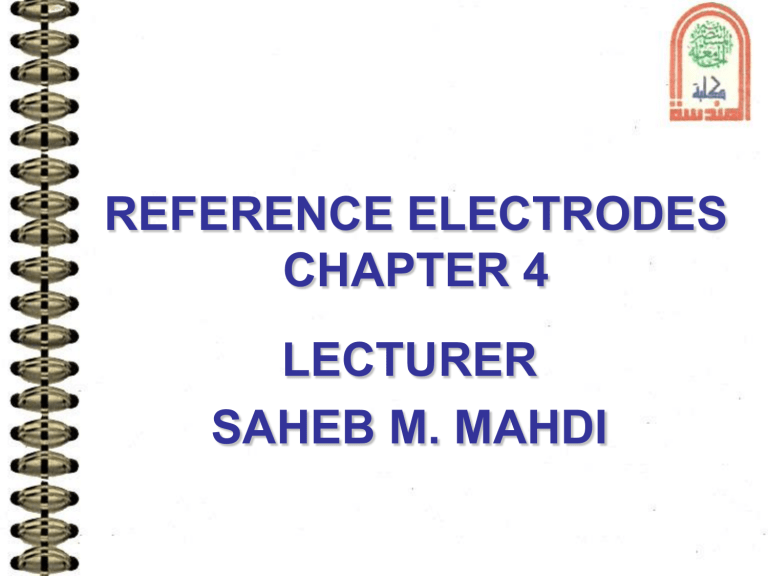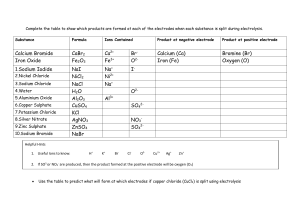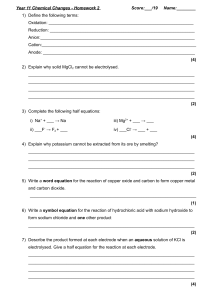
REFERENCE ELECTRODES CHAPTER 4 LECTURER SAHEB M. MAHDI Reference Electrodes :1)Hydrogen Electrode : The hydrogen electrode is used as a reference for electrode potential measurements . Theoretically , it is the most important electrode for use in aqueous solutions. The reversible hydrogen electrode in a solution of hydrogen ions at unit activity exhibits a potential, which is assumed to be zero at all temperatures .The electrode consists of a platinum wire immersed in a solution containing hydrogen ions and saturated with hydrogen gas . Platinum is immersed completely in aqueous arsenic free hydrochloric acid, and hydrogen gas free from oxygen and carbon monoxide is bubbled to platinum surface. Slowly the air is displaced by hydrogen and the reversible potential is achieved. Unfortunate, this electrode has some drawbacks . First the reversibility of hydrogen electrode cannot be maintained in oxidizing media. Second if a current is withdrawn from the electrode the electrode acts an anode ,because of the ionization of gas molecules. 2) Silver – Silver chloride Electrode : This electrode is composed of a silver chloride and immersed in a solution of chloride ions .The chloride equilibrium is given by : Two other reactions involve a dynamic equilibrium between deposition and dissolution of silver together with solubility equilibrium between silver chloride and its ions .The metallic silver reaches equilibrium with silver ions according to the following reaction : The overall electrode reaction is therefore given by : 3 ) Copper – Copper Sulfate Electrode : This is a reference electrode which is easy , robust and stable . It is used mainly in Cathodic protection measurements , such as the measurement of pipe – to – soil potential .It has lower accuracy than other electrodes used for laboratory work .It consists of copper metal placed in a solution containing copper sulfate and copper sulfate crystals placed in a non-conducting holder with a porous plug .The equation for the copper-copper sulfate electrode potential is given by : The reaction of the Cu-CuSO4 half cell is A saturated solution of 1.47 mole Cu-CuSO4 at 25 C is used . 4) The calomel Electrode :It is the most commonly used reference electrode. It has a constant and reproducible potential. The electrode basically consists of a platinum wire dipped into pure mercury which rests in a paste of mercurous chloride and mercury. The paste is in contact with a solution of potassium chloride.




